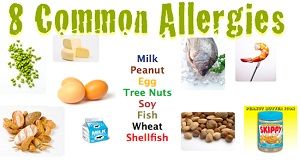
Allergies are a common concern among parents, especially when it comes to their children. Allergies occur when the immune system reacts abnormally to substances that are usually harmless, such as pollen, pet dander, certain foods, or insect bites. Allergic reactions can vary in severity and can cause a wide range of symptoms, such as runny nose, itchy eyes, coughing, wheezing, skin rashes, and even difficulty breathing.
Identifying Allergy Triggers
Identifying the specific triggers that cause allergies in children can be a challenging task. However, it is crucial to pinpoint these triggers to effectively manage and prevent allergic reactions. Some common allergens include:
Pollen from trees, grass, and weeds
Dust mites
Mold spores
Animal dander (from pets like cats and dogs)
Foods (such as peanuts, milk, eggs, soy, or wheat)
Insect venom (from bee stings or mosquito bites)
Pay close attention to your child’s reactions and symptoms when they come into contact with potential allergens. Keep a record of their symptoms, the time of exposure, and any patterns that may emerge. This information will be valuable when discussing your child’s allergies with a healthcare professional.
Consulting a Healthcare Professional
If you suspect that your child may have allergies, it is essential to consult a healthcare professional, such as a pediatrician or allergist. These experts specialize in identifying and treating allergies in children. They will conduct a thorough evaluation, including a detailed medical history, physical examination, and may recommend specific allergy tests to identify the triggers causing your child’s reactions.
Tests such as skin prick tests or blood tests can help determine the specific allergens triggering your child’s symptoms. These tests are safe, relatively painless, and provide valuable insights into the allergens affecting your child’s health.
Managing Allergy Symptoms
Once you have identified your child’s allergy triggers, effectively managing their symptoms becomes the next crucial step. The treatment plan will depend on the severity of the allergies and may include one or more of the following:
Avoidance of allergens: The most effective approach is to minimize exposure to known triggers. This may involve keeping pets out of specific areas, regularly cleaning and dusting the house to reduce dust mites, using air purifiers, and checking food labels for potential allergens.
Medications: Over-the-counter or prescription medications may be recommended to alleviate your child’s symptoms. Antihistamines can help relieve itching and sneezing, while nasal sprays can control nasal congestion. In severe cases, corticosteroids or epinephrine autoinjectors may be prescribed.
Allergen immunotherapy: This treatment option involves exposing your child to small amounts of specific allergens gradually. Over time, this helps build their tolerance and reduce the severity of allergic reactions.
It is crucial to follow the treatment plan prescribed by your healthcare professional and regularly monitor your child’s symptoms. Be proactive in seeking medical advice if changes in symptoms or new triggers arise.
Preventing Allergies in Children
While allergies cannot always be prevented, there are measures parents can take to reduce the risk:
Exclusive breastfeeding for at least six months, as it can help boost the child’s immune system.
Introducing solid foods gradually, starting with low-allergenic options and observing any adverse reactions.
Maintaining a clean and dust-free environment at home.
Regularly washing hands and teaching children proper hygiene practices.
Minimizing exposure to potential allergens such as tobacco smoke.
Remember, allergies can develop at any age, so it is essential to stay vigilant and observant of your child’s health.
Final Thoughts
Allergies in children can be challenging to manage, but by identifying triggers and implementing appropriate measures, parents can help minimize symptoms and improve their child’s quality of life. Working closely with healthcare professionals, keeping a record of symptoms, and following treatment plans can make a significant difference. Remember, prevention and early intervention are key when dealing with allergies, allowing children to lead a healthy, allergy-free life.

